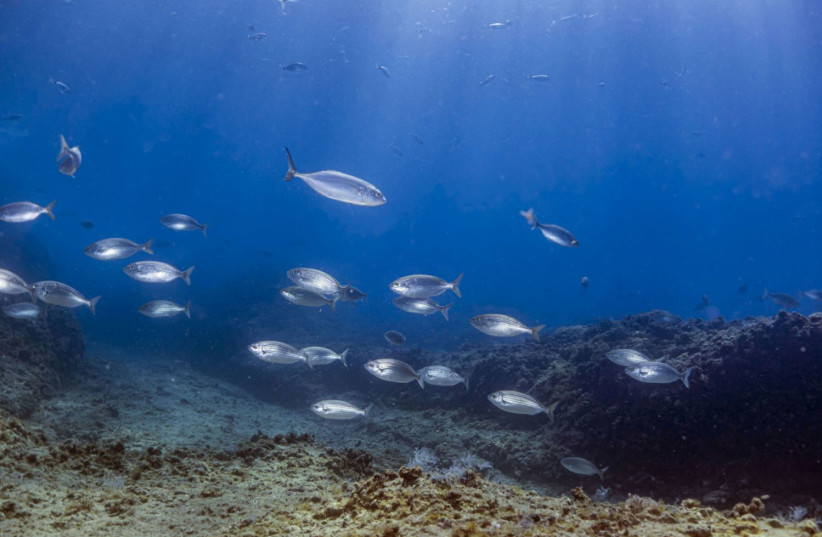Big fish in a warm pond: how has pollution impacted fish? – study
The warming of water has been found to increase the size of fish but also decrease the life expectancy, recent scientific research has revealed.
The recent peer-review study, published in the journal eLife, collected data from an artificially heated enclosed bay to try to understand how fish were impacted by changing temperatures.
How did the researchers measure the impact of temperature on fish populations?
The bay selected by the researchers had data collected on the Eurasian perch population from before 2003, as during this period the bay had netting surroundings. The netting prevented fish over 10cm in length from migrating into or out of the area, meaning that the fish collected for the study would have been born in the bay and subjected to the conditions there.
The selected bay was being warmed by a local nuclear power plant, which made the water temperature 5-10°C than the surrounding waters.
The fish from the bay were compared to fish from the archipelago bay located close by.
 Fish are seen swimming below the Mediterranean Sea, where climate change has forced many animals to swim to new depths. (credit: Dr. Shevy Rothman)
Fish are seen swimming below the Mediterranean Sea, where climate change has forced many animals to swim to new depths. (credit: Dr. Shevy Rothman)From 2,426 fish, researchers collected 12,658 different measurements. This allowed researchers to measure the growth of fish throughout their lifespan.
“Studies into the effects of warming waters on fish from large-scale, semi-controlled experiments in natural settings are rare, yet they can provide unique insights,” explained the lead author Max Lindmark. Lindmark is a researcher at the Swedish University of Agricultural Sciences in the department of aquatic resources in Lysekil, Sweden.
“We used a unique study system to investigate how warm water pollution has changed the death rates, growth rates and size of fish over many generations.”
The scientists recorded information on the age, scale size and size of each fish.
What were the results of the study?
The researchers found that fish cohorts had grown more rapidly in heated pools, and reached a larger ultimate size than what would have been predicted.
The researchers estimated that the fish in the heated pools had grown to be 7-11% larger than in their control area.
Female fish had grown more rapidly than their male counterparts in the heated bay.
While larger fish may be thought of as a sign of a healthy ecosystem, the scientists did find that the death rates among the fish were higher because of the pollution. This meant that the fish population from the bay was comprised of younger fish.
Despite the death rates, the bay did have a larger quantity of fish than the control bay.
What significance does this study hold in predictions of continued global warming?
The researchers finding directly contradicted previous predictions on how climate change will impact fish populations, they explained in their study, having written “Ectotherms are predicted to ‘shrink’ with global warming, in line with general growth models and the temperature-size rule (TSR), both predicting smaller adult sizes with warming.”
“Our study provides strong evidence for warming-induced differences in growth and death rates among a natural population of an unexploited temperate fish species exposed to 5-10°C water temperature increases for more than two decades. These effects largely, but not completely, counteract each other – while the fish are younger, they are also larger on average,” said co-author Malin Karlsson, who is a water manager at the department of nature and environment, for the county administrative board of Västmanland, Sweden.
“These findings highlight that generalized predictions based on theories such as the temperature-size rule may have limited use for predicting changes at a population level, and that both death rates and growth rates are important when studying temperature effects,” concluded senior author Anna Gårdmark, a professor at the Swedish University of Agricultural Sciences, department of aquatic resources in Uppsala, Sweden.
“Although we only studied a single species, this unique climate change experiment suggests the effects of heating at the scale of a whole ecosystem, making its findings highly relevant in the context of global warming.”
Having produced evidence which disputed current thought was not lost on editors of the article, who wrote “This work provides convincing evidence to refute a general tenet in biology, that warming induces smaller maximum body sizes in adult ectotherm individuals. Using a semi-natural experiment in an exceptional man-made ecosystem, the authors demonstrate that fish in waters warmed by a nearby nuclear plant grew faster but died younger, causing little effect on the size distribution of fish in the area. This work will be of interest to ecologists and physiologists interested in the impacts of global warming on natural communities.”





Comments are closed.